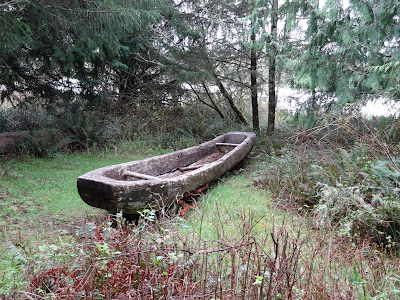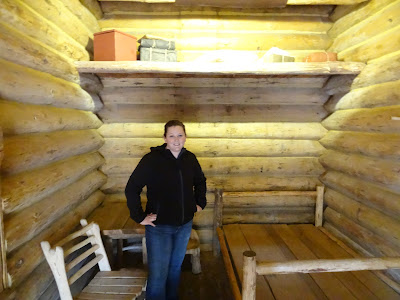Visited: Mar 2015
Nearby city: Astoria, OR
"Ocean in view! O! The joy."
-journal entry of William Clark, November 7, 1805
The Lewis and Clark Expedition is one of the most seminal events in American history. For the first time, Americans had forged an overland path from the former colonies all the way to the Pacific coast. Once the Corps of Discovery (the name given to the expedition, it consisted of 7 officers, 30 enlisted men, and 15 civilians) reached the Pacific Ocean, they settled for the winter at a place they called Fort Clatsop.
The expedition first arrived at the Pacific Ocean in present-day Washington (now called Cape Disappointment) and stayed their for a few days. On recommendation of the Clatsop Indians, the Corps of Discovery decided to camp alongside the Columbia River, so they could have a freshwater source. It took almost a month to construct the fort, there was a lot of delay due to harsh winds and unrelenting rain. It was a simple fort and served as the Corps home until they departed back for St. Louis on March 22, 1806.
The National Park service constructed a replica of the Fort in the 1950s. Unfortunately, it burnt down in 2005, but was rebuilt in 2007. It is a meticulously reconstructed fort, construction was based on sketches done by William Clark himself. Today, the NPS includes this area and preserves a number of other historical sites in the area, in conjunction with a number of state parks in Oregon and Washington.
The centerpiece of the Historical Park is Fort Clatsop. Start your visit here, explore the museum and see the reconstructed fort.
 |
| statue of Sacagawea and Pompy |
Make sure to visit the other sites of the National Historic Park. They are all close by. We went to Cape Disappointment State Park in Washington, at the mouth of the Columbia River. We enjoyed the ocean views and the lighthouse. There is also a very nice museum about the Corps of Discovery.
BONUS: Another great aspect to visiting this NPS unit is you get to spend time in the city of Astoria. This beautiful port city of about 10,000 people, known as "Little San Francisco", is the oldest American settlement west of the Rocky Mountains.
Head up to Coxcomb Hill and climb the 125 ft. Astoria Column for great views of the surrounding countryside and the 4-mile long Astoria-Megler Bridge.
Stop at the beach (the ocean will likely be too cold to swim, but the sea air is nice and you can see the rotting hull of the ship the Peter Iredale, which ran ashore in 1906.
Another interesting site is Ft. Stevens, a military installation that was active from Civil War to 1947. This was the only site in the lower 48 that saw enemy fire during World War II. On the night of June 21, 1942 a Japanese submarine surfaced off the coast of Astoria and fired a few volleys, trying to strike the fort. The commanders ordered not to fire back, lest they give away their position to the enemy.
Astoria was the location for a number of movies, most famously and memorably the 80's smash hit Goonies. The old county jail has turned itself into the Oregon Film Museum and contains some props used in the film. The town has kind of become a mecca of sorts for fans to visit sites from the movie. Stop by the "Goonies" house, but it is privately owned so please respect that. There is also the Flavel House Museum, the home of former bar pilot George Flavel. Built in 1885, it's a wonderful example of Quuen Anne architectural style, it also serves as the museum used in the Goonies movie.
Astoria is a fantastic visit. For more info on the Historic Site, go to https://www.nps.gov/lewi/index.htm

































No comments:
Post a Comment